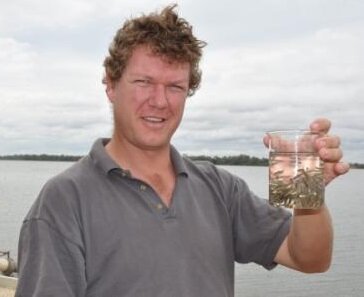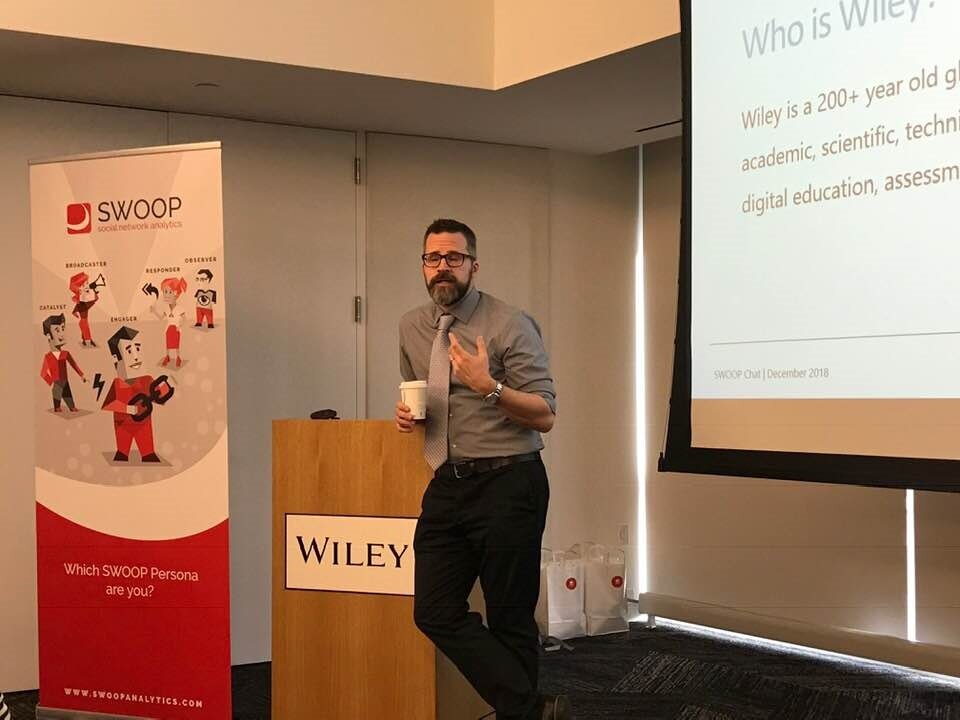What’s the ROI on collaboration?
What’s the ROI on collaboration? It’s a question we’re often asked at SWOOP Analytics.
While we know collaboration in the workforce leads to higher performing teams, which leads to better business outcomes, it can be difficult to put a dollar value on collaboration.
A recent Forrester Consulting’s Total Economic Impact study found a return on investment (ROI) of 832% for organisations using Microsoft Teams and its Total Economic Impact of Workplace by Facebook study found a ROI of 398%. Do the maths and you can figure out what effective collaboration means for your company’s bottom line.
Take a moment to stop and think about how simply collaborating on platforms like Microsoft Teams, Yammer or Workplace from Facebook on a day-to-day basis is saving you time, giving you better access to information, and how that could be saving your company thousands of dollars.
It can be as simple as asking a question of your colleagues to find a quick solution to a problem that could take hours, days or weeks to find the answer if you had to go externally.
We’ve spoken with scores of SWOOP customers who have shared examples of how collaborating has saved their bottom line, resulted in quick answers to issues and, ultimately, delivered a better product to their customers. Here are a few of their stories.
How collaboration is saving taxpayer dollars
The taxpayers of the Australian state of New South Wales are the beneficiaries of savings made by the NSW Department of Primary Industries (NSW DPI) by collaborating on Workplace from Facebook.
Matt McLellan on Lake Cargelligo, in the Central West region of NSW, with fish stock.
Matthew McLellan, the Hatchery Manager at Narrandera Fisheries Centre, has eliminated at least 100 phone calls each season by instead using Workplace to communicate to his colleagues around the state.
He used to make at least 100 phone calls a season to notify fisheries officers in the area where his team was stocking fish. He would also send emails, and when no reply came, he’d back that up with more phone calls. It took hours upon hours out of his busy day, and ultimately cost money in lost productivity.
With the introduction of Workplace, Mr McLellan set up a private group for Narrandera Fisheries Centre and invited colleagues into the group from across the state. When fish are being stocked in any of the 100 stocking sites, information is posted on Workplace telling everyone of the plan. Phone calls have been eliminated and, unlike the emails, Mr McLellan can be sure of who has seen the post.
“By putting the information up on the group it’s there for all of us to see,” he said.
“You can put the post there and you can see who has seen it and what’s happening and it leads to discussion, which we didn’t have before.”
A Workplace post from Matt informing colleagues of fish stocking plans.
This transparency in communication has repeatedly stopped long trips to sites to stock fish where there has been no water. Because plans are posted on Workplace, colleagues from other areas have been able to alert to colleagues to spots unsuitable to stock fish, avoiding an unnecessary trip to the area.
Mr McLellan was identified by SWOOP as an influential person at DPI and dubbed a Workplace “champion”.
NSW DPI eCommunications Officer Melissa Hamling says once Workplace “champions” are identified by SWOOP, they can be targeted to encourage and teach their colleagues to be more comfortable using Workplace. Learn more about the impact of Workplace and SWOOP at NSW DPI.
Making money from obsolete stock on Yammer
For global drinks giant Diageo, the makers of Johnnie Walker, Bailey’s, Guinness, Smirnoff, J&B and many more spirit and beer brands, using Yammer to collaborate has resulted in direct benefits to the company’s bottom line.
Some of Diageo’s brands.
Diageo has stock in warehouses all over the world. Some of this is surplus stock which carries the name SLOBS, for Slow Moving and Obsolete Stock.
Of course, the company wants to transfer its SLOBS into sales. It set its sales team a challenge to reduce SLOBS by 25 per cent. So, the sales team turned to Yammer and set up a group called The SLOBS Swap Shop.
Suddenly, every salesperson anywhere in the world could connect with warehouses or other sales personnel in search of what they were looking for.
There may be an excess of Guinness beer in Los Angeles but someone in Chicago needs it. They can post a message on Yammer and have an answer within minutes. Previously, this would have been a laborious trawl through paperwork to get the same result.
Conversations on the SLOBS Swap Shop.
Did the sales teams meet their target of reducing SLOBS by 25 per cent? Yes, they did.
“That behaviour was a catalyst to changing the way that we work,” said Ruth Kirkup, Diageo’s former Employee Engagement, Channel Manager.
“We position Yammer as a place where employees can connect, collaborate and learn from each other in a single, online, open space.”
How Diageo is using SWOOP to measure collaboration across the enterprise.
Higher employee engagement means safer restaurants at KFC
KFC Australia says it can directly link Yammer campaigns to a 28 per cent increase in safety incident reporting across its 642 restaurants.
KFC’s People Capability Director, Jonathan D’Souza, speaking at Microsoft’s Engagement Summit.
Just as importantly, says KFC’s People Capability Director, Jonathan D’Souza, engagement across the business is up 36 per cent and team members are feeling connected, according to SWOOP data.
Collaborative culture leads to ROI
Another great example of saving time and money was shared by global publisher Wiley.
In October 2017, an employee named Veronica posted on Yammer that she had a voicemail she needed to listen to from an editor. But the voicemail was in Korean and Veronica didn’t speak Korean. She posted on Yammer asking if anyone could help.
Another employee, Helen, in another office, saw the post and while she couldn’t speak Korean either, she knew someone who could. The Korean speaker, Jerry, was tagged into the post and replied that he would try and help, or otherwise find someone who could.
The post from Wiley’s Yammer network.
Ron Perazza, Director of Communications, Wiley, speaking at SWOOP Chat NYC.
“They connected on Yammer, arranged to speak, and got the message translated,” said Ron Perazza, Director of Communication at Wiley.
“That’s the way it’s supposed to work.”
Instead of spending time to find and pay for a translator, the entire problem was solved internally on Wiley’s Yammer network, resulting in a quicker, free and more productive outcome.
Collaboration leads to a better product for customers
Invercargill, one of the most isolated cities in the world, but connected with Yammer.
In New Zealand’s southernmost city, Invercargill, there’s a small Thrifty car rental branch. The three employees at the Invercargill branch rely on Yammer to stay connected with their colleagues across the country.
During winter, there is often snow on the roads around New Zealand’s South Island. The roads are impassable without chains or a 4WD vehicle.
Thrifty’s Invercargill Branch Manager Ritchie Dodd often relies on posts in Yammer from his colleagues at other branches, like Queenstown, alerting if roads are closed or snow chains are required.
If Mr Dodd finds out from his colleagues there is snow on the roads and chains are needed, he can upsell chains to his customers, bringing an immediate financial benefit to Thrifty.
More importantly, he is keeping his customers safe and as a result, happy and satisfied, which is likely to lead to return bu siness.
The need to measure collaboration
These real-life examples of saving money by collaborating were all identified through data from SWOOP. SWOOP measures online collaborative behaviours and gives clear insights on who is connecting with whom and enables the entire organisation to measure cross-team collaboration at an individual level, team/group level, and as an enterprise.
Without analytics to help you clearly understand where collaboration is, and isn’t, happening you simply have no way of measuring if you’re receiving ROI on your collaboration.










